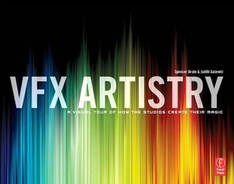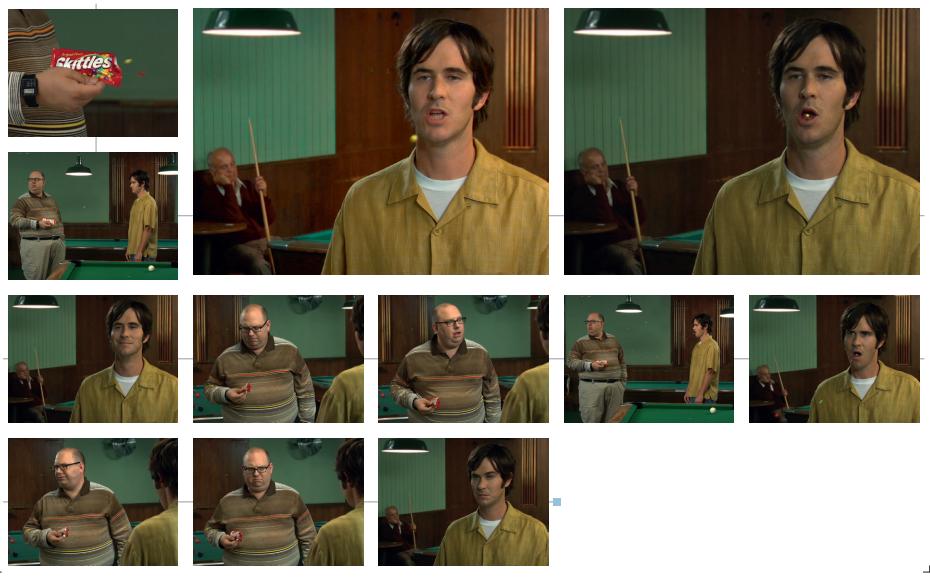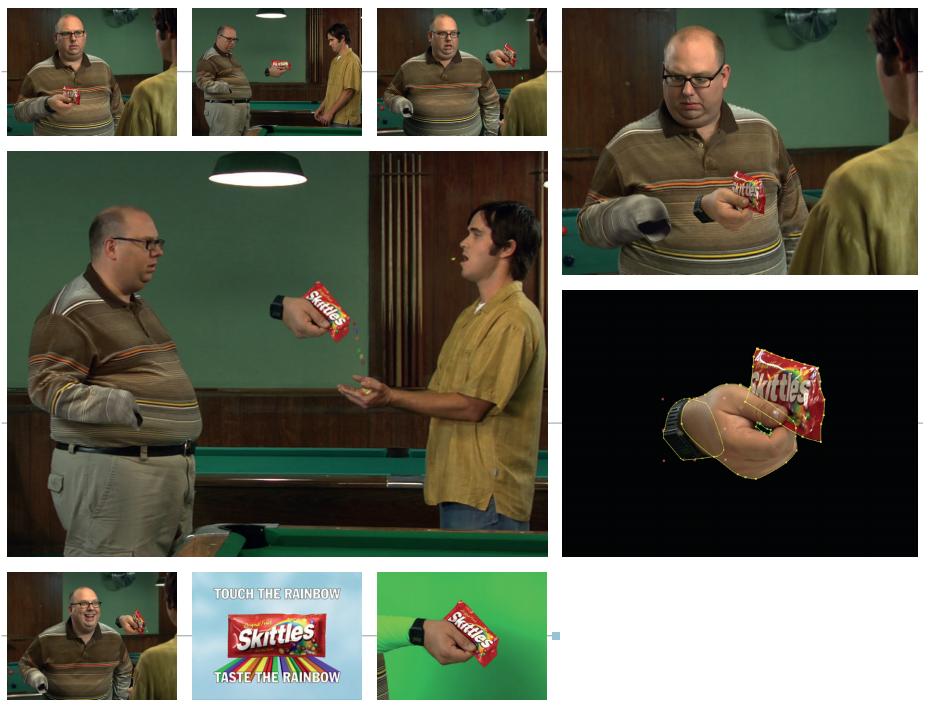4 JESSE JACOBS
STUDIO PHILOSOPHY
Jesse Jacobs is a Director who combines live action filmmaking, visual effects, animation, and design. He works in commercials, music videos, and broadcast design. With his background as a trained performer at second city, extensive hands-on postproduction experience, and skill with comedic talent, his integrated approach to production, motion, and storytelling often explores characters in absurd surreal situations.
SKITTLES: “MINDBENDER”
Creative and Production Process skittles “Mindbender” is an award-winning comedy and effects spec commercial for the controversial Mars candy brand skittles. It won a silver at the international film festival Worldfest and has been featured in international blogs and online magazines. We brought a variety of industry talent to bear on this showcase spot, including leading Hollywood visual effects company Eden FX; editorial house Edit 89 in New York; and to serve as co-creative director/co-copywriter, Brian Nash, former creative Director at Draft FCB in chicago and currently a creative Director at Maddock Douglas in Elmhurst, IL.
“Mindbender” opens in a rundown Hollywood pool hall as a poker-faced pool player ends a game of 8-ball by guiding the game ball into the corner pocket with a geometrically impossible shot. “Hey, you’re that telekinetic guy,” notes a slightly irksome observer, clenching a pack of skittles. Without revealing his identity, “telekinetic guy” distracts his slightly dense adversary’s attention by moving cue sticks across the room behind him while he opens the package, guiding skittles into his mouth after some aerodynamic maneuvering. Finally, the “mindbender” telekinetically removes his opponent’s hand to siphon off the last of the skittles. Despite losing his hand, the guy triumphantly exclaims, “I knew it!”
In preproduction, I created a detailed animatic to serve as a rough draft of the final spot, as well as a comic book–styled multi-layered shooting board. The idea was to go into the shoot meticulously prepared for an efficient production but to leave room for improvisation and allow the actors to be in the moment as much as possible. There was a third character in this spot—a bagful of CG-animated Skittles—and it was important to plan the effects so they integrated well with the live action performances. The goal was to give them something to play off of to drive the comic timing.
I hired a musical improviser to create sound effects live on set as shooting proceeded, as well as a Hollywood model maker who rigged the skittles bag with a small motor and used a remote control to move the bag around, one of several in-camera practical effects in the spot. Nearly everything else—the skittles, the cue sticks, and balls—was CG-animated and expertly composited as subtle photo-real effects by the Eden FX (www.edenfx.com) team of vfx supervisor Fred Pienkos and animators John Karner and sean scott.
I’ve done a lot of effects work, but here my goal was to create a simple concept where the humor comes from characters that are placed in an absurd, bent reality. This is a concept that, for me, fits into that scheme because it balances the real with the surreal using an offbeat sensibility in an entertaining fashion.
When people think of visual effects in movies and even in commercials they often assume that everything was just created magically on the computer. But a visual effects production requires a lot of planning in advance so that the performance integrates seamlessly with the animation. When you design a live action effect you first visualize how each layer will fit together in post. You determine what elements or layers you can capture photographically and which layers will be created digitally using both compositing and CGI.
In the climax of the commercial the telekinetic uses his mind to remove the man’s hand. The following section includes a description of two main effects scenes that comprise most of the techniques used throughout the commercial.
We started with the in-camera performance, which is often referred to as the back plate. The observer watches his hand break off and float away, as the telepath cups his hands. We showed the actors how the layered elements would fit together so they could visualize the performance and physically imprint the invisible effect into their sense memory. Practically, we rigged the talent’s sleeve so that his hand was inside his shirt, which was removed later. This gave the 3D artists reference in texture and lighting to recreate the CGI sleeve.
In the next step the original arm is painted out. This allows us to remove his arm and hand and add a CG sleeve and composite a real practical hand later. This is achieved using cloning and compositing.
A CG sleeve with armhole is modeled, textured, and lit to replicate the look and feel of the actor’s velour striped shirt. What makes this effect work is having the shirt react in a naturalistic way as the hand detaches. The CG element is then composited and blended back into the original sleeve using a combination of the original background plate and the painted clean plate.
We shot a close-up of the hand performance. The actor was instructed to imagine his hand was floating up and pouring. This was filmed from a locked position. once composited the hand would be animated to look as if it were actually floating.
The hand was rotoscoped in post using a standard series of masking and bezier curve tools.
The final composite combines the background, the CG sleeve, and the hand. The CG cloth reacts to the hand detaching. The hand is animated to float off matching the actor’s sight line. The result combines all these layers and elements for the final effect.
For the second part, we started with the filmed back plate. The man’s hand floats over to the telepath and pours skittles. As he does so, skittles fly into the telepath’s mouth. We had talent imagine the action so they could perform the invisible. The actor’s arm was rigged again to conceal the hand.
In post, the original arm is painted out and the fabric from the belly is grafted on top. This is done using cloning and compositing techniques, which allow us to remove his actual arm and replace it with a CG sleeve later.
A CG sleeve is modeled, textured, and lit to match the original fabric. The CG element is blended using a combination of the cleaned plate and the original back plate. Next, the front of the telepath’s hand is rotoscoped. CG skittles are added into the scene, and the left hand is composited on top of the skittles that fall into his hand. The arm is fitted with a greenscreen sock and filmed against a greenscreen background. The hand is keyed and isolated ready for compositing. The final composite again mixes the background, the CG sleeve, the hand, and the pouring skittles. All the elements and techniques meld to create a surreal illusion to serve the comic premise.
Credits
Director: Jesse Jacobs
Creative Directors: Jesse Jacobs, Brian Nash
Art Director: Jesse Jacobs
Copywriters: Jesse Jacobs, Brian Nash (FCB)
Line Producers: Bruce Devan, Merilee Newman
DP: Brian O’Connell
Editor: Bryant Wang
Visual Effects/Compositing: Eden FX
Visual Effects Director: Fred Pienkos
Principal Performers: Bill Chott, Josh Murphy


